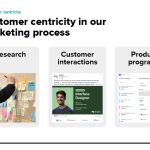- Like
- SHARE
- Digg
- Del
- Tumblr
- VKontakte
- Flattr
- Buffer
- Love This
- Save
- Odnoklassniki
- Meneame
- Blogger
- Amazon
- Yahoo Mail
- Gmail
- AOL
- Newsvine
- HackerNews
- Evernote
- MySpace
- Mail.ru
- Viadeo
- Line
- Comments
- Yummly
- SMS
- Viber
- Telegram
- JOIN
- Skype
- Facebook Messenger
- Kakao
- LiveJournal
- Yammer
- Edgar
- Fintel
- Mix
- Instapaper
- Copy Link
For the longest time, there’s been little education about the different types of SaaS business models. There are a few more marketing terms thrown around that make things more complex when they’re really fairly simple. We want to address the confusion and present an unbiased comparison of SaaS business models for anyone who wants to compare them. Let’s get started.
What is Software as a Service?
The SaaS business model utilizes software hosted on a server rather than installed on a user’s computer or device. Users can access and use the software through their web browser without downloading or installing it onto their computer or device. Most SaaS solutions and applications are accessed via an app store or website. The most common example of a SaaS solution is Salesforce, which allows companies to manage their sales leads, accounts, and customer relations management (CRM) all in one place.
Pros and Cons of the SaaS Model
Pros
1. Flexibility and Scalability
With SaaS, you can choose the features that suit your needs best and pay only for what you use. You don’t have to worry about updating systems or upgrading hardware because your provider takes care of everything. You get unlimited storage space and bandwidth, so there are no hidden costs or fees associated with using SaaS.
And since SaaS providers take care of all maintenance issues, it’s easy to scale up your usage as your business grows. Simply contact the provider and ask for more features or storage space. The cost will be minimal compared with buying additional hardware and software licenses.
2. Low Entry Costs
With a subscription model, you don’t need to worry about buying equipment or setting up infrastructure. You just pay for what you use. This means that you can get started with just a few hundred dollars outlay for hosting and developing your product. This makes it much easier for startups to get off the ground.
3. Low Maintenance Costs
The SaaS model means that you don’t have to worry about installing, maintaining, or upgrading your software. The provider handles all of these tasks and guarantees that they will keep your system updated with the latest features and security patches. This also means less work for you and fewer IT resources required on your end.
4. No Licensing Fees (For Most Providers)
Cloud-based services are often offered as subscriptions instead of selling the software outright. This has two major advantages: it allows companies to provide upgrades and new features to their software over time, and it also eliminates the need for users to pay licensing fees every time they want to install or use the product on multiple devices.
5. Easy Upgrades
They can also upgrade at any time without having to pay for the entire cost upfront at once; they only pay for what they need each month and get access immediately after signing up.
Cons
1. Often Requires Upfront Capital Investments in Hardware or Infrastructure
The biggest disadvantage of the SaaS business model is that it often requires upfront capital investments in hardware or infrastructure. This can be an issue if you are bootstrapping your startup or have limited resources. You may also need to hire a developer or other technical resources who can build and maintain the necessary infrastructure required by your application.
2. SaaS Applications are Often Only As Good As Their Internet Connection
If there’s no connectivity, users can’t use your product until they’re back online again. This issue may be addressed by having offline access available through an app like PocketCloud; however, this requires additional development costs and maintenance overtime to keep up with new versions of Android or iOS releases that could break compatibility with older versions of PocketCloud.
3. Difficulty Making Money from Free Users
The common practice is to offer a free trial period, during which users can try out your software without having to pay anything. The problem is that most people who sign up for a free trial never convert into paying customers — they just use your product until the trial period expires and then move on to something else.
In order to make money from freemium software, you have to find ways to get paid users who aren’t willing to pay for your product or service but still want access to it.
4. Risk of Losing Customers If Your Service Goes Down
If your service goes down, customers won’t be able to use it. They also may not be able to access their data if they’re working on projects that require access to your servers. This can be a big problem if your company relies on recurring revenue from customers who have paid for subscriptions in advance.
Different Types of SaaS Business Models
1. The Main Product-Based SaaS Business Model: One-time Purchase
The main product-based SaaS business model is the simplest, and it’s usually what people think of when they hear “SaaS.” This model involves a one-time purchase of a subscription to software or other services. The customer pays for the software license in advance, on a monthly or yearly basis.
The recurring revenue that comes from this type of SaaS business model is driven by customers who continue to renew their licenses each month or year.
2. A Second Product-Based SaaS Business Model: Higher Tiers, Paying More for More Features
This is a good model for companies that have a lot of features and can create bundles that their customers find attractive. For example, if you’re selling an HR software suite and it has 20 different modules in it, then you can consider this model. Or, if you are selling an accounting package with hundreds of functions, this could be the right fit.
In this business model:
- You sell your software as a core product at one price and charge more for additional functionality via add-ons or packages.
- Customers will pay more for the higher tiers simply because they have more value to them than just what’s included in the base package (e.g., someone who wants payroll will pay more than someone who doesn’t).
3. A Third Product-Based SaaS Business Model: Lower Tiers with Fewer Features, Paying Less
This is a business model where SaaS providers offer lower-priced tiers with fewer features. The idea behind this approach is that the smaller businesses that don’t need all those fancy bells and whistles can get by with a more basic version of the software.
This approach allows you to scale from $10 per month up to tens of thousands without developing different versions for each price point. This makes sense if your product lends itself well to being broken down into multiple tiers and categories.
The disadvantage is that you may lose potential customers who want all the bells and whistles in one package, so if you go this route, make sure there are no features they’d pay extra for if they knew they were available!
4. The Usage-Based SaaS Business Model
The subscription model is the most basic and common SaaS business model. It allows customers to access your product on a recurring basis for a flat monthly fee, usually paid annually or in equal installments. The customer benefits from regular updates, new features, and constant support from the vendor (you).
This model works well for products that have high retention rates because you can monitor usage metrics and use them to tailor future development plans. If your product is something like an accounting software package or CRM system that requires ongoing management of data, then this would be an excellent choice for your business model.
5. The Customer-Focused SaaS Business Model
The customer-focused SaaS business model is the most common and, arguably, the easiest to understand. At its most basic level, it means that the customer pays for your SaaS product and uses it to solve their own problems.
This model focuses on your customers and how they interact with your product—not on you or your company. You’re not selling a product so much as you are providing a service: helping people solve their problems by using what you’ve built.
Since this model focuses on helping others, there’s no end to what can go into this business model beyond making sure that customers are happy with what they’re getting from you (and not just satisfied). In fact, some companies will go above and beyond just offering great products: they’ll provide exceptional levels of support or even offer free trials so potential customers can try before buying; others may offer free access for low-income users who can’t afford normal pricing plans (or even discount rates).
Conclusion
There are many different types of SaaS models out there, some require a fixed price monthly subscription, and others use a pay-as-you-go model. All these models have their pros & cons. A fixed payment plan usually gives you more control over pricing and also has an added advantage of spreading out the cost over a period of time, which in turn reduces the risk to the customer. However, that means that you need to calculate the amount of capital your project will require and ensure that you do not take more money than what is needed to sustain your product or service.




